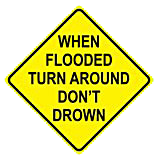Overview
Weather forecasting begins with measuring the current weather around us. One measurement that has been used for a long time is the amount of rain a location has received. We will build rain gauges and when rain occurs, the students will be able to compare their total with each other and the "official" amount.
| TOTAL TIME | 30 minutes (gauge construction time). Another option is to have the students obtain a manufactured rain gauge. They can be purchased for so as low as $2 each and will be more accurate. |
|---|---|
| SUPPLIES | A straight sided glass container, such as an empty jar (size doesn't matter); Scissors; Paper; Pencil; Ruler; Scotch tape; Chart for recording rain measurements (see below); Map of the area around your location for plotting the students' reports |
| PRINTED/AV MATERIAL | Chart (pdf) for recording rain measurements |
| TEACHER PREPARATION |
Ideally, each student will be able to make a rain gauge. Collecting enough jars may be difficult; you may need to enlist the help of your colleagues, in addition to the students providing their own. In preparation, you may want to collect jars throughout the year. The size of the jar is irrelevant. All that matters is that the sides are straight from the top to the bottom. Remove all labeling from the jars. You will also need to map the locations of the students' places of residence to display rainfall amounts. |
| SAFETY FOCUS | Flood/Flash Flood Safety |
Procedure
- Cut the paper into strips about one inch wide and the length of each jar.
- Using a ruler, make markings on the paper so it becomes a ruler. You can mark the paper in whatever increments your desire. Divide it up by inch, and then in quarters, and even smaller if possible. The National Weather Service measures rainfall in 0.01-inch amounts.
- Carefully align the bottom of your paper ruler with the bottom of the jar. Attach a piece of tape to hold it in place.
- Tape the paper ruler onto the jar, ensuring the entire ruler is covered by tape to help make it water resistant.
- Place the rain gauge in an exposed location away from trees and tall objects such as buildings. These objects may affect the amount of measured rain. You may also glue the jar to a block or platform of wood so it does not tip over if it is windy.
- When it rains, record the date and amount collected on your rain chart. Dump out rainfall after you measure it so that the gauge is reset and ready to record the next rainfall. Keep a running total of the month-to-date and year-to-date rain at your location. Remember to record your rainfall in the classroom to compare your total with the other students.
- The teacher should add the student's rainfall amounts to the map of their places of residence.
Discussion
Rainfall is rarely uniform across a large area. Even when every location receives some precipitation, there are areas that can have very heavy rain next to areas with very little, if any, rain. This is more common in the spring and summer, when most of the rain falls as showers, rather than in winter, when the rain is usually more uniform.
After a rain event, check the local news reports for additional rainfall reports from the region to add to the map. Your local National Weather Service office will publish rainfall reports for their spotter network, which can also be added to the map. Another resource to check is the Advanced Hydrologic Prediction Service website for rainfall maps.
Ask if there was any thunder heard or lightning seen during the rain event(s). If so, are the differences in rainfall amounts larger (or smaller) with lightning/thunder and why? (Thunderstorms are from convective clouds and as such do not cover widespread areas, leading to large variances in rainfall.) In contrast, widespread rain events tend to have more uniform rainfall totals, though there will still be variances.

Building a Weather-Ready Nation
Most flood-related deaths and injuries could be avoided if people who come upon areas covered with water followed this simple advice: Turn Around Don't Drown.
The reason that so many people drown during flooding is because few of them realize the incredible power of water. A mere six inches of fast-moving flood water can knock over an adult. It takes only one-two feet of rushing water to carry away most vehicles. This includes pickups and SUVs.
If you come to an area that is covered with water, you will not know the depth of the water or the condition of the ground under the water. This is especially true at night, when your vision is more limited. Play it smart, play it safe. Whether driving or walking, any time you come to a flooded road, TURN AROUND, DON'T DROWN!

